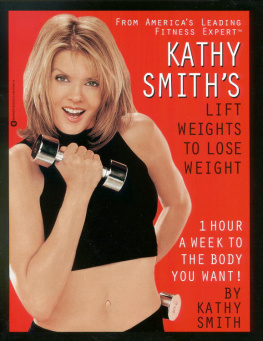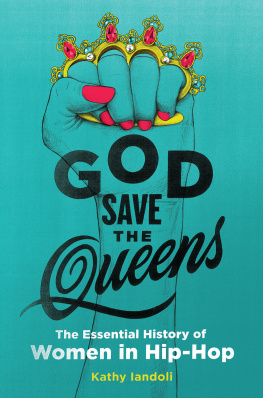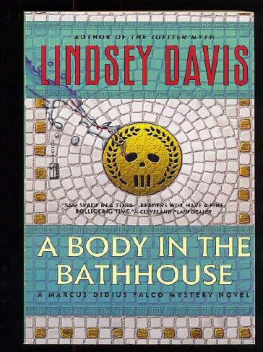Reshaping the Femaee Body
Published in 1995 by
Routledge
29 West 35th Street
New York, NY 10001
Published in Great Britain by
Routledge
11 New Fetter Lane
London EC4P 4EE
Copyright 1995 by Routledge, Inc.
Printed in the United States of America on acid free paper
All rights reserved. No part of this book may be reprinted or reproduced or utilized in any form or by any electronic, mechanical or other means, now known or hereafter invented, including photocopying and recording, or in any information storage or retrieval system, without permission in writing from the publisher.
Library of Congress Cataloging-in-Publication Data
Reshaping the female body : the dilemma of cosmetic surgery / Kathy Davis.
p. cm.
Includes bibliographical references and index.
ISBN 0-415-90631-8.ISBN 0-415-90632-6 (pbk.)
1. Surgery, PlasticPsychological aspects. 2. Self-perception in women. 3. Women
Health and hygieneSociological aspects. 4. Feminist theory. I. Title.
RD119.D385 1994 94-19290
617.950082dc20 CIP
British Library Cataloguing-in-Publication Data also available
Material from has appeared in different forms in Kathy Davis, Remaking the She-Devil: A Critical Look at Feminist Approaches to Beauty, in Hypatia 6, 2 (Summer 1991):2143; Kathy Davis, Het recht om mooi te zijn. De vele gezichten van cosmetische chirurgie, in Lover 18, 1 (1991): 4-9; Kathy Davis, Cultural Dopes and She-Devils: Cosmetic Surgery as Ideological Dilemma in Negotiating at the Margins: The Gendered Discourses of Power and Resistance, ed. Sue Fisher and Kathy Davis, (New Brunswick: Rutgers University Press, 1993).
Contents
FOR MIEKE
This book about womens experiences with cosmetic surgery is based on interviews with surgery recipients, physicians, plastic surgeons, and medical inspectors, and on field work in medical settings. To preserve confidentiality, I cannot thank the interview subjects by name. However, the book owes a debt of gratitude to each of them, including the medical practitioners who shared their insights (and, in some cases, doubts) about cosmetic surgery with me and who gave me permission to do field work. I would especially like to thank Iman Baardman, with whom I set up and conducted the clinical study, for a stimulating and enjoyable collaboration. And, finally, my most heart-felt thanks are due to the women who, by generously sharing their experiences with me, helped me understand what cosmetic surgery is about. I hope that they are not disappointed in the outcome of our conversations.
In the course of working on this project, many people kept me supplied with a stream of newspaper clippings, pictures, references, and articles. In particular, I would like to thank Marlou Boots, Sandera Krol, and Juliette Zipper.
Lively and often heated discussions with friends, students, and colleagues have contributed enormously to the development of this book. I would like to thank the participants in the post-graduate course Interpreting Gender which was held at Utrecht University in 1993, and the members of the ongoing seminar on text analysis at the Womens Studies Department there for their insights and helpful comments.
I owe warm thanks to the following people for their careful reading and constructive critique of various chapters: Anna Aalten, Jan Davis, Sue Fisher, Lena Inowlocki, Mary Lommerse, Joan Wolffensperger, and Dubravka Zarkov. The copyeditor Neill Bogan was an authors delight who not only polished up the text and kept me on track, but issued the occasional, timely warning against using dubious rhetorical strategies to make my point.
I am indebted to Lorraine Code for encouraging me on several occasions to engage with my critics, and Nina Gregg for reminding me that conflictsespecially among feministsare worth confronting.
An extra note of thanks goes to Lena Inowlocki for her friendship, her humor, her sensitive commentary, and her numerous impromptu lessons on how to do biographical analysis.
Wieneke Matthijsse spared me the hassle of having to cope with recalcitrant printers and produced a polished manuscript, for which I am grateful.
Most of all, Willem de Haan was the person who read all the drafts, was my toughest but most encouraging critic, and helped me through all the rough patches. He showed me, once again, why I dont ever want to write a book without him.
Amsterdam, May 1994
Kathy Davis
Introduction
Cosmetic Surgery as Feminist Dilemma
This book is about how women account for their decisions to have cosmetic surgery. What kinds of experiences make them want to have their appearances altered surgically? How do they explain the decision and how do they view it in light of the outcome?
Like every book, it is also a personal story. It is the story of how Ia feminist with a long-standing concern about the gendered inequities of medical encountersbecame interested in understanding why women want to have their bodies altered by surgical means. What began as my rage at the horrors being perpetrated on womens bodies by the medical system turned to a profound puzzlement after I talked to women who were eager to undergo cosmetic surgery. My inability to put these two emotions together in a meaningful and acceptable way created such a strong sense of unease that I had no other recourse but to tackle my discomfort head on. Being someone who enjoys a challenge, I decided to put my experience to work, using it as a resource rather than an impediment for a feminist analysis of cosmetic surgery.
Several years ago, I attended a conference on body image and identity at the Dutch medical faculty where I had been working for some time in the field of medical sociology. The audience was composed primarily of physicians and medical academics, along with a few social scientists like myself One of the speakers was a well-known plastic surgeon. This particular surgeons talk was all about the wonders of cosmetic surgery in helping people overcome a negative body image. He explained that doctors in his specialty had some unique difficulties in diagnosing their patients. In most medical specialties, patients dont know what their problem is, and leave it to the specialist to figure out. Not so with cosmetic surgery. Here, it is the patient who knows whats wrong and the surgeon who often has a hard time seeing it. This leaves him with a dilemma: either he has to send the patient home empty-handed or he has to find some medically acceptable reason for an intervention as drastic as surgery. To illustrate this point, the speaker gave a slide show withwhat else?before and after pictures. To my surprise, the patient was not a middle-aged woman with wrinkles who wanted a face lift, but a fifteen-year old Moroccan girl who wanted her nose done. According to this surgeon, this girl was only one among many similar cases: second-generation immigrant adolescents who were getting harassed at school for having noses like that. They became miserable, antisocial, and developed feelings of inferiority, he explained. It became difficult for them to become assimilated into Dutch society.
Now, what did this man of science conclude? He decided that he had stumbled upon a new syndrome and, being an enterprising scientist, he immediately gave it a name: inferiority complex due to racial characteristics. Thus, a new diagnostic category was born, many more noses could be fixed, and, presumably, many unhappy young Moroccan women were enabled to live happily ever after. End of story.









